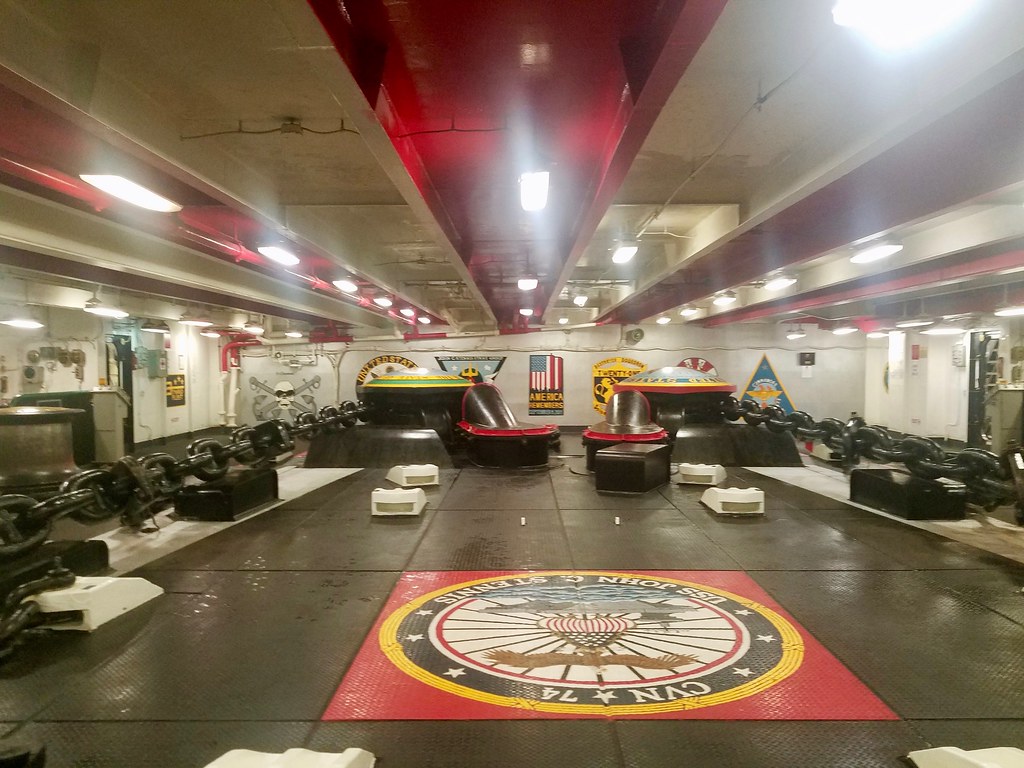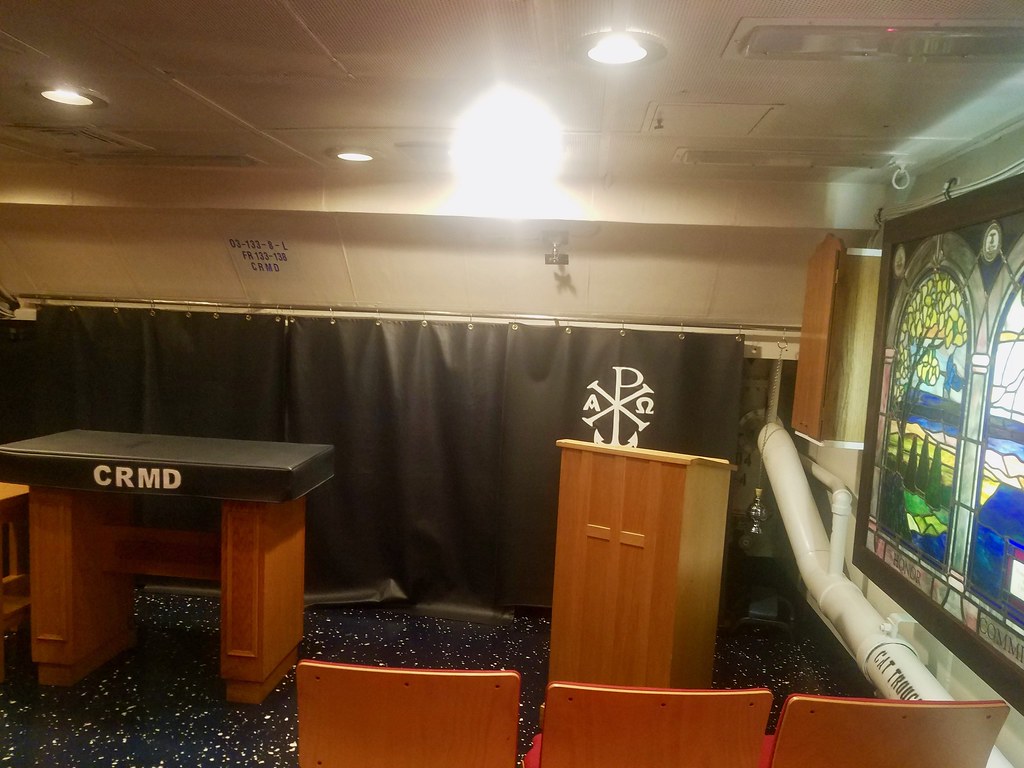I certainly enjoyed my all-too-brief time on the USS John C. Stennis and hopefully I can get another opportunity to do it again someday. However, all things must end so I’ll tie-up a few remaining threads so we can move on to further adventures.
Museum

A museum on an aircraft carrier? Sure, why not. Behind locked doors, the ship did keep a small museum that opened on special occasions. Our little group apparently qualified because we got to pass through the portal. The museum — really just a small interior room — held all sorts of materials and ephemera that once belonged to the ship’s namesake.
John C. Stennis (1901-1995) served in the United States Senate for more than forty years, representing the state of Mississippi. He supported a nuclear Navy and pushed hard for the construction of nuclear-powered aircraft carriers during the 1970’s. Upon his retirement, President Ronald Reagan declared that the next carrier would be named for Stennis. And so it happened.
Additionally, Stennis supported space exploration, which accounted for the NASA facility in southern Mississippi that also bore his name. Likewise, it explained the NASA artifacts in the tiny shipboard museum. Oddly enough, I happened to visit NASA Stennis barely a month before this trip.
Forecastle

The forecastle — sometimes spelled Fo’c’s’le — filled an upper deck towards the front of the ship. Here ran two large chains on either side, with each link weighing 250 pounds (115 kilograms) and each chain weighing 60,000 lbs. (27,000 kg). They can be seen on the left and right sides of this photograph.
The crew measured chains in standard color-coded lengths called “shots.” This helped them know how much chain had been let-out while anchoring the ship. If the shot with yellow links appeared and the anchor still hadn’t hit bottom, braking might not be able to stop the chain from continuing its run. That would be bad. If the final shot ever appeared, the one painted red and called the “Danger Shot,” the crew had better be out of there. The chain could detach, whip through the room, and drop into the sea.
The forecastle served a secondary purpose because so few places on the Stennis offered so much freely available open space. The crew used it for training classes and things of that nature too.
Fantail

Fantails “are small insectivorous birds of Australasia, Southeast Asia and the Indian subcontinent belonging to the genus Rhipidura.” I saw one such species on my trip to New Zealand last year at Wai-O-Tapu. They fly in a very distinctive way with the feathers spread out to help them turn quickly so they can catch insects.
The very back end of an aircraft carrier kind-of protruded in a similar way I suppose. Anyway, someone thought so because they called it the fantail. Whatever, I really enjoyed the fantail, standing there watching the sea unroll behind us. It would have been a great spot for watching incoming jets too, although I went out there during one of the rare quiet moments with nothing in the air.
Chapel

One feature on an aircraft carrier that might not fit on a lot of smaller ships was a dedicated chapel. Both a Protestant and a Catholic chaplain sailed with the crew. They reached out to all faiths, not just Christian, and followed a non-proselytizing rule. Much of their work involved nondenominational counseling to homesick sailors away from their families for long periods of time. The chapel didn’t offer a whole lot of room, with space at such a premium on the Stennis, although it sufficed for most needs. They could also move to the Forecastle for particularly well-attended services such as at Easter and Christmas.
In the photography above, the acronym CRMD stood for “Command Religious Ministries Department.” Everything aboard had its own acronym.
Officer’s Country

Greater amenities and privileges went to those at increasingly higher ranks, as I noted in previous articles. For example, one entire area of the ship was reserved solely for officers. It went by the descriptive name, “Officer’s Country.”
I wasn’t about to tell them about the apostrophe seemingly placed incorrectly on the sign. I mean, it felt like more than a single officer could occupy the space at a given time. We received ready access because of our Distinguished Visitor credentials so it didn’t matter. However, woe to the enlisted person who entered Officer’s Country without permission.
Articles in the Aircraft Carrier Series:
- Getting to Norfolk
- All Aboard
- Air Power
- The Island
- Living Aboard
- Feeding Time
- Always Working
- Other Spaces and Places
See Also: The Complete Photo Album on Flickr

Leave a Reply